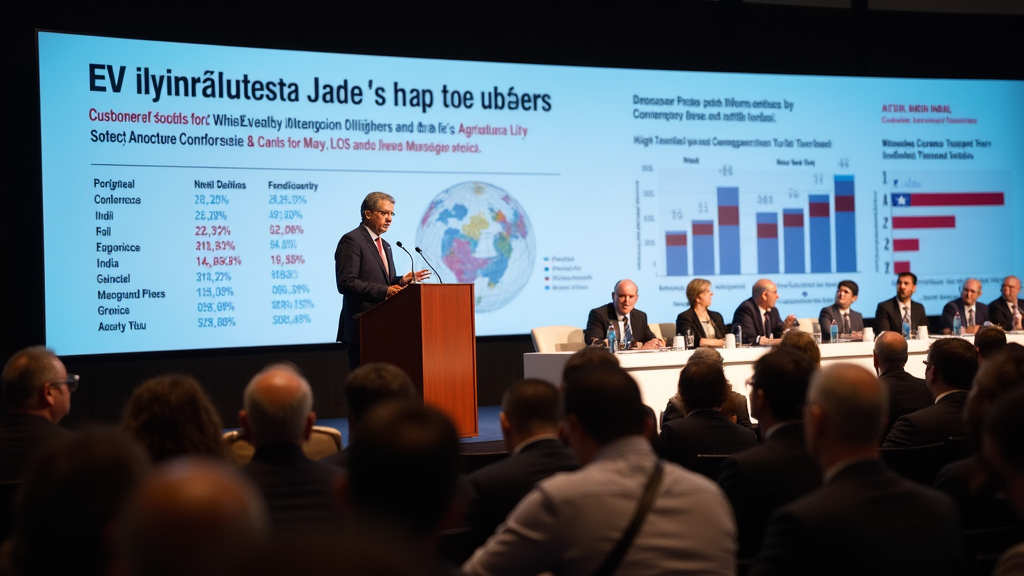US-India Trade Conflict: Impact of Reciprocal Tariffs on Agriculture
US Criticizes High Indian Tariffs on Agricultural Goods Before April 2 Tariff Deadline
The ongoing trade dispute between the United States and India has escalated as the April 2 deadline approaches. The core of the contention lies in the high tariffs India imposes on American agricultural products, with the United States demanding a reciprocal approach to trade relationships. This article delves into the structural trade imbalances, negotiation dynamics, global context, and political implications of the tension between these two major economies.
Reciprocal Tariff Showdown
The United States has increased pressure on India by calling for “reciprocity.” The spotlight is on India’s 100% tariffs on various American agricultural goods, such as dairy and grains, and the non-tariff barriers that impact sectors like medical devices and digital services. This has been a longstanding grievance for U.S. trade representatives, who argue that such measures severely restrict the competitiveness of U.S. exports in the Indian market.
Structural Trade Imbalances
The disparity in tariff rates is substantial; India imposes an average tariff of 39% on agricultural imports compared to the United States’ 5.3% on Indian exports. This imbalance extends beyond tariffs, covering non-tariff obstacles like opaque licensing and government subsidies, which skew agricultural markets in India’s favor but limit U.S. market access.
Negotiation Dynamics
Amidst the tension, India has proposed modest reductions on tariffs for select U.S. goods, such as almonds, cranberries, and bourbon whiskey. However, there is steadfast resistance to more significant agricultural concessions, as these would affect the livelihoods of millions of small-scale Indian farmers. The Indian government prioritizes food sovereignty and protecting domestic agriculture from the influx of cheaper subsidized foreign goods.
Broader Global Context
The U.S. justifies its stance by pointing to high tariffs from other countries, including the EU’s 50% on dairy and Japan’s staggering 700% on rice. By highlighting these examples, the U.S. argues for a rationalization of global trade practices underpinned by reciprocal strategies to ensure fair market access.
Sovereignty vs. Trade Liberalization
Advocates for maintaining India’s current tariff structure argue that they are essential for defending the country’s agricultural autonomy and the livelihoods dependent on it. Meanwhile, U.S. officials stress the need for open market access and fair competition for its highly subsidized agribusiness sector, which faces restrictive barriers abroad.
Critical Perspectives and Quotes
White House Press Secretary Karoline Leavitt highlighted the challenge for American exports, stating, “India charges 100% tariffs on American agricultural products… making it virtually impossible for US exports to compete.” These sentiments are echoed in the USTR’s report, criticizing India’s unpredictable tariff changes and the opaque nature of its trade policies.
From the Indian angle, trade experts like Ajay Srivastava at GTRI caution against quick concessions: “India must not sacrifice food sovereignty or policy autonomy for trade deals… US demands risk destabilizing 700 million livelihoods.”
Political and Economic Implications
This tariff confrontation comes against the backdrop of broader geopolitical considerations, with both nations navigating complex international alliances and economic dependencies. As the deadline looms, the potential for escalation into a full-blown trade war remains a significant concern, bearing ripple effects not only for bilateral relations but also for global trade systems at large.
Conclusion
As April 2 approaches, the stakes continue to rise in this U.S.-India tariff battle. The resolution of these trade tensions will require delicate diplomacy and possibly structural policy adjustments, balancing protectionist instincts with aspirations for greater market integration and collaboration.
This article underscores the importance of understanding the broader ramifications of these economic policies, providing a nuanced perspective that weighs the pros and cons of both sides while emphasizing the need for sustainable and fair global trade practices.
latest video
news via inbox
Subscribe to the latest news in the world of politics and technology







